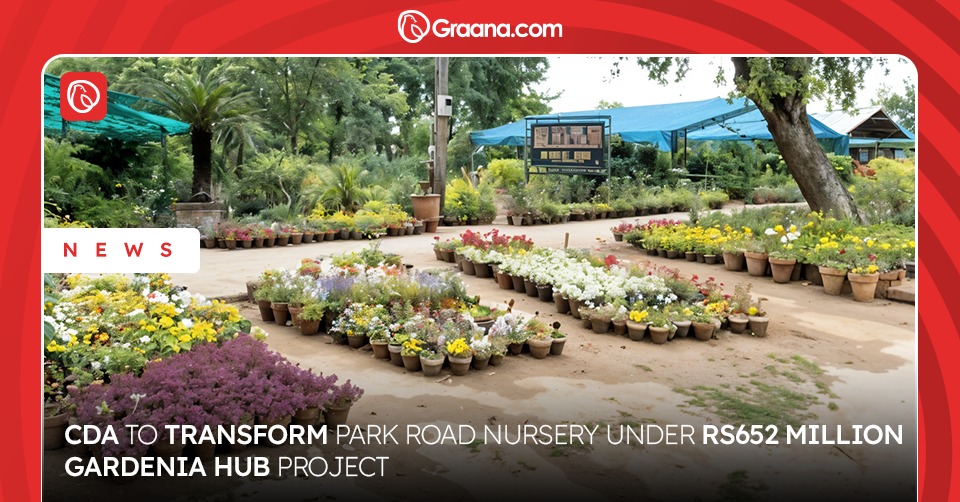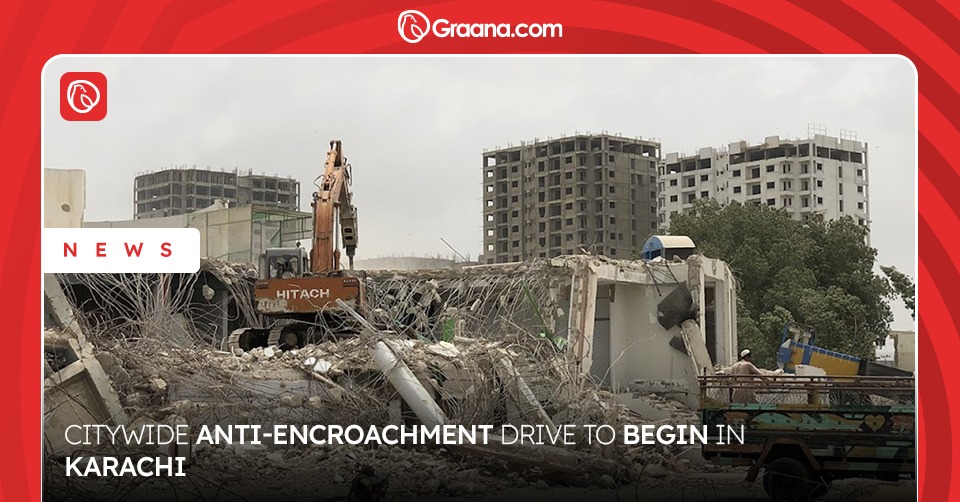Preamble
Pakistan is facing rapid urbanisation, and growing demand for affordable housing has left the majority to look for house financing solutions. Exorbitant land prices make the purchase of homes difficult for the general population, especially for the lower and middle-class income groups. This blog by Iqbal Institute of Policy Studies (IIPS) highlights the concept of a mortgage, including the merits and demerits associated with using this financial model. It also presents Pakistan’s current housing finance situation and what steps are being taken by the government to promote mortgage financing.
Research Questions
- What is a mortgage?
- What are the pros and cons of mortgage financing?
- What is the current situation of housing finance in Pakistan?
- What steps are being taken by the government to increase mortgage financing?
Introduction
Development economists attribute greater economic and social importance to housing finance as it remains underdeveloped and overlooked in Pakistan. As housing finance is expensive and is still rationed in favour of higher-income populations, private mortgages remain uncommon, small, and unaffordable. In most developing countries, housing plays a key socio-economic role. It is often the main wealth of the middle-income class. In the backdrop of rapid urbanisation and the subsequent rising demand for housing, many will not afford formal housing without proper financing solutions. This ultimately puts the issue of housing finance at the forefront of solving the housing crisis in Pakistan. Managing risks and regulating the lending industry along with implementing targeted and fiscally responsible policy interventions is vital as it provides economic stimulus, leverages on growth, investment, and jobs. In order to realise the potential of housing finance, policymakers, in collaboration with the private sector, need to address the challenges facing the sector and introduce targeted housing finance programs.
What is Mortgage Financing?
Population growth, coupled with the government’s inability to provide affordable housing to the poor and middle class in major urban centres of Pakistan, has led to a housing crisis. Real estate prices are incredibly high in urban areas, and the middle-income salaried class cannot afford to buy houses. A mortgage is a debt instrument, secured by the collateral of specified real estate property, that the borrower is obliged to pay back with a predetermined set of payments (Julia, 2020). In simpler terms, individuals and businesses use mortgages to purchase real estate without paying the entire amount upfront. The borrower is required to pay the mortgage over a predesignated period, with interest, unless he or she owns the property. Suppose the borrower is unable to pay the loan. In that case, the banks, or other lending facilities, may forcefully vacate the premise to sell it to settle the initial debt. The urban housing demand in Pakistan amounts to approximately 350,000 units per year, and the corresponding supply of 150,000 units per year in no way bridges this gap (The Nation, 2019).
Mortgages come in many forms; some are offered at a fixed rate while others rely on an adjustable-rate. The difference is that in a fixed rate, the borrower pays the same amount of interest throughout the life of the loan. This is also called a traditional mortgage. In adjustable-rate mortgages, the interest changes with time and follows market trends. This usually means lower initial principal payments, but can lead to the rising cost of interest payments due to inflation. Another less common type of mortgage is an interest-only mortgage. These involve complex repayment schemes and are the main cause of financial trouble. Mortgages come with a lot of variables which must be kept in mind. Starting with the repayment plan, homebuyers must work with experts on all aspects of a mortgage to get the best deal on the biggest investment that will impact their life.
The Pros and Cons of Mortgage Financing
A mortgage is essentially a loan which has to be repaid over a specified period of time along with interest according to an agreed repayment schedule. Loans are suitable for paying for assets, start-up capital of businesses, and instances, where the amount of money needed, is not going to change. As banks are primarily a business, they will lend on the basis of an adequate return on investment. They have to keep into consideration the risk of default and also cover administrative costs. A mortgage is generally considered to be a cost-effective borrowing method as interest rates are generally lower compared to other types of loans. With the ability to choose between fixed-rate or adjustable-rate, mortgages also provide flexibility in the long run or certainty of repayments with a fixed rate. The government has recently also introduced many incentives for banks and other lending facilities to provide easier access to housing finance. This can make buying a home a more viable option. An advantage of mortgage financing also lies in the concept of repayment holiday, whereby an individual only pays interest for a certain amount of time without paying anything for the capital amount. This can significantly reduce the burden of debt for those who face any difficulty during the loan period.
The cons of mortgage financing are similar to the cons of large value loans as certain terms and conditions must be adhered to in order to avail the service. On average, a mortgage can last from 15 to 30 years, and that is a long time for being under a debt commitment. In the event that an individual cannot keep up with his monthly payments, the bank or the lending facility can forcefully vacate the premises to write off the loan. Besides interest, there are also many hidden fees, such as valuation fee, remortgaging fee, and conveyance costs. The interest rate on mortgages and house financing in Pakistan is already very high, therefore, people end up paying way more than the actual cost of the home. Lastly, regulatory measures by governments and bank terms and preconditions often mean that very few people qualify for a mortgage loan in countries like Pakistan, where the housing finance industry is already weak.
The Current Situation of Housing Finance in Pakistan
According to Hassan (2020), Pakistan is currently facing a housing backlog of 10.3 million units. Due to a high rate of economic growth and a sizable increase in remittances, the housing sector is facing a problem of supply shortages and escalating prices. Banks and lending institutions are not ready to take credit risks in the absence of foreclosure laws, which currently prevent the banks from retrieving homes from those who default on their debt. Investments in housing in recent years have resulted in increasing urban property prices compared to the purchasing power of the majority population. These twin problems indicate that thPakistan’sousing sector remains grossly underdeveloped and undercapitalised as housing finance only accounts for 0.5 per cent of the GDP (Dawn, 2019). However, housing finance remains neglected in Pakistan. Banks and other lending institutions receive thousands of applications each year applying for home loans, but the number of cases where the lent money is not repaid is even higher in number. Most individuals and business cannot secure a loan for their property purchase, and consequently, the sector remains undocumented due to parking of illegal money. The construction of 100,000 housing units in the country can increase GDP by around 2 per cent (Dawn, 2020). The construction industry also employs the largest number of skilled and unskilled labour in Pakistan. According to a World Bank report, mortgage loans in Pakistan are typically extended to the extreme end of the high-income group, which excludes those who are most in need of housing finance (Zahra, 2018).
In 2015, the government of Pakistan launched the Pakistan Mortgage Refinance Company (PMRC) and Exim Bank of Pakistan (EBP) with an authorised paid-up capital of Rs 10 billion each (Dawn, 2015). They were formed to promote, develop, and improve housing finance to increase the availability of affordable housing to the larger public. Both models of finance, Islamic and conventional, were included in this program. According to Shahid (2017), the average loan amount disbursed by the banks remains in the bracket of 2 million to 8 million rupees, which is also well below what an average house costs in major urban centres. Therefore, the majority of banks and lenders require that the borrower pay a large sum as an initial deposit of the mortgage. To improve the situation, housing loans must be provided so more people can afford to buy homes and provide an incentive for builders and contractors to speed up development. According to Yawar (2017), as of June 2016, the aggregate gross amount outstanding for mortgage loans was Rs 66 billion. Consequently, the Pakistan Mortgage Refinance Company (PMRC) was created with its shareholdings, including the Ministry of Finance, and the country’s largest commercial banks, to supply secured mortgage financing. Reforms need to be implemented in fundamental aspects of a market-driven housing finance sector in order to achieve sustainable growth of housing finance in the future.
Steps being taken by Pakistan to Increase Mortgage Financing
Consumer lending in Pakistan is increasing, and banks have adopted a less conservative approach towards offering loans to the general public. The mortgage market is also becoming an important kind of consumer loan, but its full potential remains to be realised. According to Yawar (2017), the incremental demand of housing requires annual funding of Rs 1.5 trillion, and if effective demand is at 20 per cent of this value, and debt-based financing being 70 per cent of that demand, the country would need Rs 210 billion in annual funding for housing finance. Modelled on the Malaysian housing finance provider, Cagamas, the Pakistan Mortgage Refinance Company (PMRC) aims to provide secure mortgage funds to both, Islamic and conventional banking to bridge this gap.
A series of dialogues on promoting housing finance in Pakistan have taken place between the government and the World Bank Group since 2001 (State Bank of Pakistan, 2006). The dialogues include a study of the issues and options for the development of the mortgage market and technical assistance for land records management systems. The government has liberalised and strengthened the mortgage lending business by lifting various regulatory restrictions and designing a framework for expediting the loan process. The Naya Pakistan Housing Program has incentivised 100 thousand homes, for banks and the construction industry, to incentivise real estate business and housing finance in these testing times (Jawaid, 2020). A limit of Rs 2.5 million was set on loans under the program with a fixed rate of 12 per cent, but the Asian Development Bank remains unwilling to give loans under the new housing scheme as Pakistani law does not allow the bank to recover the money if the borrower defaults. Several requirements have also been relaxed for banks, and the loan to value ratio has also been reduced from 90:10 to 85:15 (Meiryam, 2020). A standardised loan application system has also been developed.
The Pakistan Mortgage Refinancing Company (PMRC) purchases mortgages from banks and guarantees them. To achieve this task, they are establishing mortgage refinancing companies in the developed world. Once the bank sells a loan to PMRC, it creates liquidity, and more loans can be given out to people, which helps expand the mortgage market. Banks usually shied away from long-term, fixed-rate mortgage loans. But now, banks can get fixed-rate funds from the PMRC, thereby granting fixed-rate mortgages to people. The business community strongly believes that the government should lease land in urban and semi-urban areas to construction companies to build high rises with two and three-bedroom apartments. Banks can later use mortgages to provide affordable housing to millions of people. All in all, the mortgage market in Pakistan is developing at a fast pace, and more and more banks are joining the PMRC in implementing their model for sustainable growth of house financing.
Moreover, banks in Pakistan have been reluctant to provide mortgage financing loans to lenders belonging to low-income groups as they are considered risky clients for the banks. While the State Bank has been advocating an interest of 7 per cent, commercial banks continue to impose an interest rate of 12.5 per cent. The State bank of Pakistan views mortgage financing as an effective way to reduce the housing shortage in the country. Recently, it has mandated banks to lend 5 per cent of their loans for housing and construction financing by the end of next year. This move by the SBP to issue a decree for initiating mortgage financing was taken as an attempt by the government to fulfil its promise to build 100,000 houses under the Naya Pakistan Housing Scheme. With an increase in housing and construction, employment and economic engagement are expected to boost economic activities in the country.
Conclusion
Affordable housing remains an elusive dream for the low and middle class of Pakistan. They cannot spend a lifetime’s worth of savings on a house while prices rise on a steady basis due to speculation in the market. Housing finance remains elusive for the general public as banks do not process new applications due to the absence of foreclosure laws. A mortgage is generally considered to be a cost-effective borrowing method as interest rates are generally lower compared to other types of loans, but the private banking industry is poorly equipped to tackle the demand for housing loans, and cannot invest a large sum towards financing mortgages. The Pakistan Mortgage Refinance Company (PMRC) was created to provide secure mortgage funds to both, Islamic and conventional banking to bridge this gap. Therefore, Pakistan is taking steps to increase housing finance by making it more accessible to the general public.




